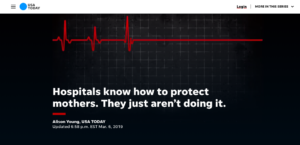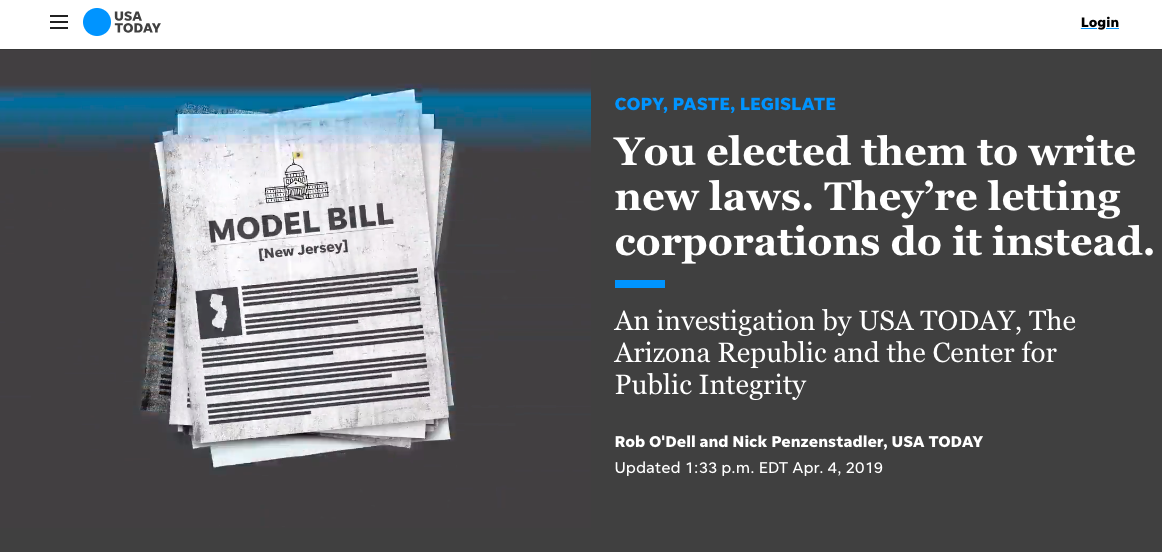For more than a decade now, newspapers around the United States have offered buyouts, followed by layoffs. It’s a familiar, deflating refrain. From 2008 to 2017, Pew reported, the number of newspaper newsroom employees shriveled by 45%.
Gannett and the USA Today Network of more than 100 local newspapers get included in that process. In January, journalists around the country lost their jobs in its latest round of layoffs.
At the same time, the company says it’s taken a deliberate approach to protecting and prioritizing investigative journalism.
“We can’t be all things to all people,” said Beryl Love, executive editor of the Cincinnati Enquirer. “But we need to have impact in our community, and that’s a deliberate move by the company.”
For more on the transformation of local news, subscribe to our weekly newsletter, Local Edition
Love returned to his hometown and paper a little more than a year ago from USA Today. There, he said, as the company and industry downsized, USA Today tried to protect investigative reporting and editor jobs. In the last year, USA Today’s national investigative team grew from eight to 24 members.
Smaller papers in the network might not all have dedicated investigative editors or reporters, but their staffs are now part of the larger network. And that network has figured out a few ways to make investigative work the focus with more training (including 30 scholarships to IRE’s annual conference), the opportunity for local newsrooms to work with the national team and a more collaborative approach to working with each other.
“Of course we’re always going to be focused on ensuring that our resources make sense in the context of the business and all the pressures that the business experiences,” said Maribel Perez Wadsworth, president of USA Today Network and publisher of USA Today. “That said, I think sometimes lost in a lot of doomsday stories about the industry are a lot of the really unwavering commitments to the journalism.”
The investigative process works in a few directions at USA Today and the network papers — national to local, local to national, and in partnerships.

Screenshot, USA Today
Deadly Deliveries is an example of a national story with local offshoots. It started as an investigation into maternal harm and mortality rates that led to local newsrooms in the network looking into their own hospitals.
The process worked in the opposite direction in Cincinnati with an investigation into a well-known sex trafficking ring in a nearby town. That town isn’t in the Enquirer’s primary coverage area, Love said, and the newsroom didn’t have experience going after someone who hadn’t yet been indicted or charged, so the editors of USA Today’s national investigative team guided the newsroom through the process.
“The great success of that story was that Cincinnati gets a story that is very local to their readers and we get a story that is so compelling and interesting that a national audience really engaged with it,” said Chris Davis, USA Today’s executive editor of investigations.
Related: How the Post and Courier grew digital subscriptions by 250%
His team works together with those local newsrooms to choose projects that can work across the network, then they create resources that each can access.
Other examples of local investigations with national resources come from Naples, Florida, Greenville, South Carolina, and Nashville, Tennessee.
One critical piece local newsrooms bring, Davis said, are the beat reporters out covering and uncovering issues.
In early April, a collaborative investigative project within the network came out in Copy, Paste, Legislate. That investigation started two years ago in Phoenix and grew to include USA Today and the Center for Public Integrity and found “for the first time the extent to which special interests have infiltrated state legislatures using model legislation. USA TODAY and the Republic found at least 10,000 bills almost entirely copied from model legislation were introduced nationwide in the past eight years, and more than 2,100 of those bills were signed into law.”
“When you look at the network, what makes us special is we have all three levels,” said Nicole Carroll, USA Today’s editor in chief.

Screenshot, USA Today
You can see the results of prioritizing investigative journalism in awards and, more importantly, changes because of that work.
In October, members of Congress started inquiring into hospital safety practices, citing USA Today’s investigation. In December, Congress passed the Preventing Maternal Deaths Act. In February, South Carolina legislators co-sponsored a bill to end civil forfeiture after “a blockbuster investigation by The Greenville News and Anderson Independent Mail, which meticulously examined every single civil forfeiture case in South Carolina between 2014 and 2016,” Forbes reported. And in March, Florida legislators approved a bill that could help reform plastic surgery clinics.
When Love first came to the Enquirer, there were a lot more reporters covering neighborhood-level news. There aren’t now, he said. The newsroom has to be much more selective in where it puts its resources.
The focus now has to be on high-impact work, he said.
“And investigative journalism is on the top of that list.”







